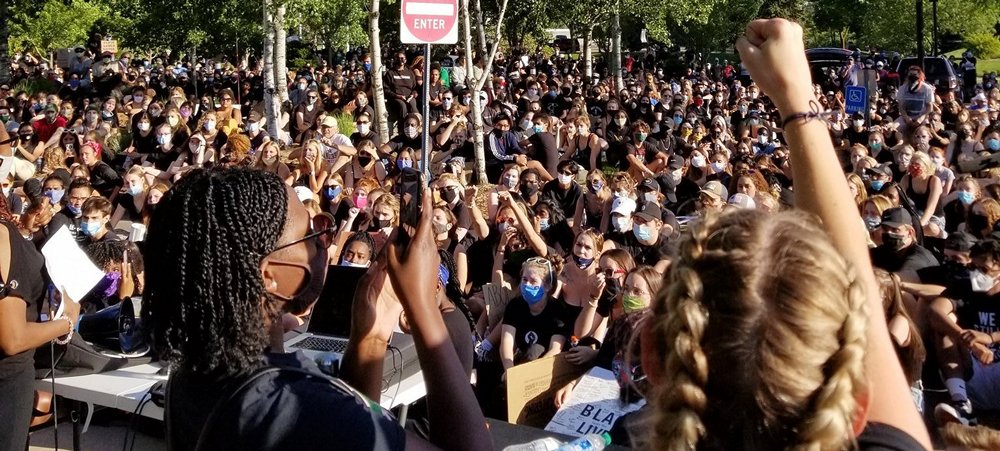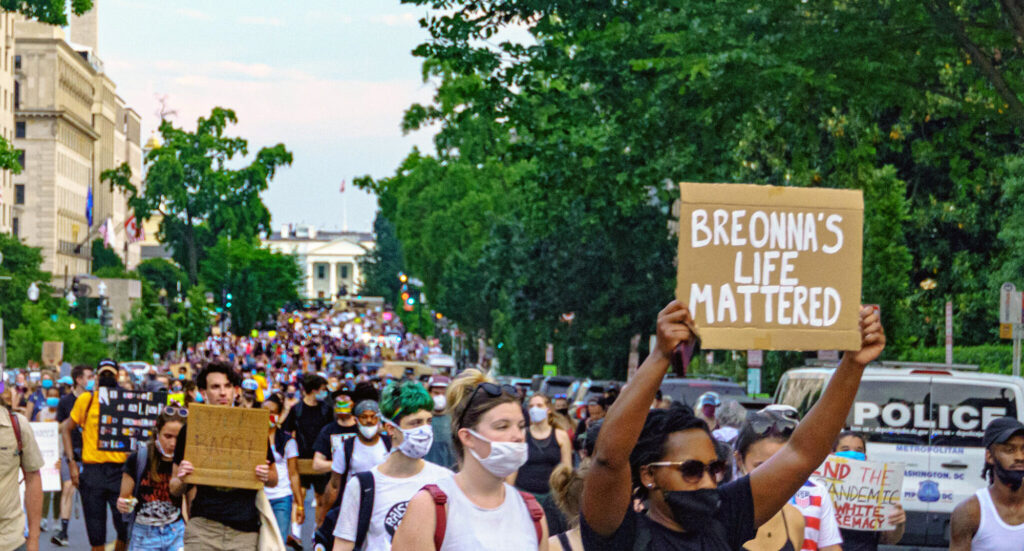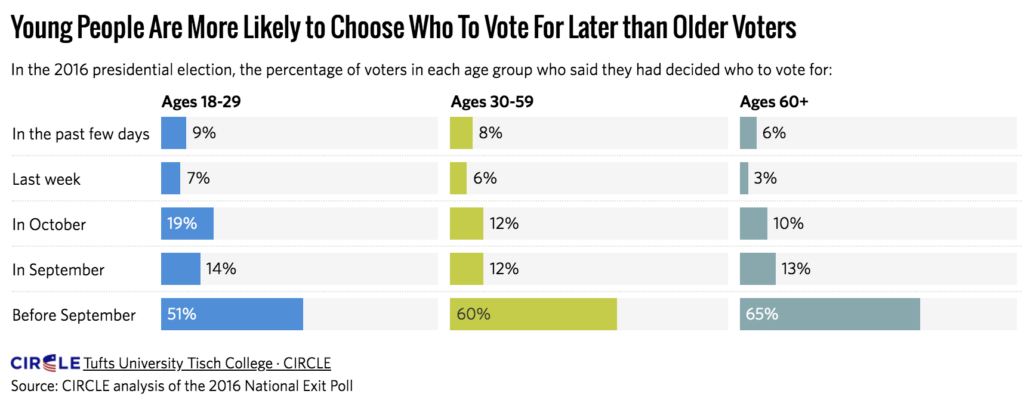
“I feel like it’s just a waste for me not to,” said Avery Walker, a Pennsylvania college sophomore, of her plans to vote this November. “If I don’t vote in this election, then clearly I don’t think voting is important.”
Walker’s message reflects a key consensus amongst experts: The youth vote will be crucial in deciding the outcome of next week’s election.
With the clock ticking down towards Nov. 3, a newly energized Gen Z is expected to turnout in record high numbers. Although many college students were forced to rethink their voting plans in light of campus closures and travel restrictions, many seem to be making use of early voting options.
As of Monday, youth voters (ages 18-29) had already cast over 5 million votes. Two-thirds of these are in battleground states that could decide the election results, like Texas, Florida and North Carolina.
High student turnout in swing states can be partially attributed to out-of-state students who chose to vote at their university address rather than in their home state. An Arizona Republican representative even introduced a bill attempting to prevent such voter registrations earlier this year. The bill would restrict voters to full-year residents, and ban dormitory address-use, although it hasn’t passed.
The student vote is just as impactful in states like Montana, where they constitute part of a much smaller electorate, and can significantly impact local election results.
“We have a critical Senate and House race in Montana—that will make the difference on everything from the climate crisis to health care access—and students know in a small state like this that their votes can decide this election. Both these races are a dead heat, and this generation of student voters will be amongst those most affected by the issues at stake,” said Katjana Stutzer, state coordinator for the Vote for Equality Montana campaign.
Young voters will also account for a larger percentage of the national electorate than in previous years, with one-in-ten eligible voters being between 18 and 23, according to Pew Research Center.
As of Monday, over a week before Election Day, 18- to 29-year-olds constituted 10 percent of the ballots that have already been returned, and 15 percent of requested mail-in ballots.
How Does 2020 Youth Voter Turnout Compare to 2016 So Far?
These tallies already seem high, considering swing states have been decided by as few as 573 votes in past elections. However, they are even more remarkable when compared with youth turnout in 2016. The number of young people voting early in Texas has already reached two-thirds of the total youth vote count in 2016.
Admittedly, turnout is up across all age groups—but across the U.S., younger voters make up a larger share of the early voting electorate than they did at this point in either 2018 or 2016.
Momentum amongst youth voters may have been fueled by the increase in activism and protest involvement earlier this year: A poll by the Center for Information & Research on Civic Learning and Engagement (CIRCLE) of Tufts University shows that more than 1 in 4 have participated in a recent demonstration.

The same report revealed that racism is one of the top three factors for youth in determining which candidates to support, in addition to environmental issues and health care access. The latter has become an even stronger influence, in the midst of a global pandemic that has disproportionately impacted people of color.
“Our poll shows that the unprecedented rise in youth activism in 2018 is continuing in 2020, with political activism and peer-to-peer engagement now becoming the norm among young people. In the face of considerable disruptions and confusion in electoral procedures caused by the COVID-19 pandemic, this energy must not go to waste,” said CIRCLE director Kei Kawashima-Ginsberg.
Issues of reproductive freedom are also on the line, especially with the recent confirmation of Justice Amy Coney Barrett to the Supreme Court, sparking outrage amongst many young female voters. In Colorado, this year’s election could alter state laws to ban abortion after 22 weeks.
“With Proposition 115—an abortion ban—on the ballot, we’ve seen a huge increase in voter participation from students on Colorado campuses because they know that with abortion access on the line, they will be one of the groups most impacted,” said Emily Escobar, a campus organizer with Feminist Majority Foundation working with Colorado students to defeat Prop 115.
Channeling this energy through the democratic process, however, is easier said than done. CIRCLE reported in June that 24 percent of youth had voted by mail in the past, and 36 percent (roughly 15 million) didn’t know where to seek out information on mail-in voting.
“We must convey clear and accessible information about when, how and where young people can register and vote and actively reach out to youth, especially those who are historically marginalized in our elections,” Kawashima-Ginsberg said.
CIRCLE’s research found that, as has been true in past elections, young people who voted previously are four percent more likely to be reached out to by a campaign or organization, with Democrats having a broader reach than Republicans.
But this leaves out swaths of first-time voters who may not have access to the information needed to safely cast an informed vote: Almost two-thirds of voters under age 30 this year didn’t vote in the last general election.
Among youth that will be voting, surveys show a strong preference for Joe Biden and for Democratic candidates across the board, especially amongst young people of color.
However, many young voters are yet to finalize their ballots, according to CIRCLE. Compared to older age groups, college voters were more likely to decide who they support in September and October.

“As campaigns, organizers and other stakeholders seek to engage youth, they should understand their diverse issue priorities—as well as how their priorities are often shaped by their identities and experiences—in order to speak directly to their concerns in ways that will help connect what youth care about to their election choices,” the report states.
Nevertheless, in addition to campaign outreach, youth are empowering each other to show up at the polls this year. Half of the youth surveyed said they’ve tried (or succeeded) in getting peers registered to vote, up from just one third after the 2018 midterm elections.
“Even in the face of significant barriers to youth participation, we are encouraged by this level of early voting and by the tremendous engagement of young people on the ground,” Kawashima-Ginsberg said. “They are leading movements and engaging their peers, and we hope this level of voting will continue through Election Day.”
You may also like:





